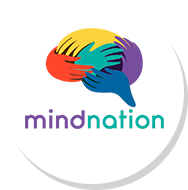In a previous article, we shared some general ways you can build a more supportive, accepting, and respectful workplace. Today, we dive deeper into how you can address unconscious bias in your business and foster a more diverse and inclusive company.
There are many types of unconscious bias (over 19), but here are the four key ones and how you can avoid them:
- Gender bias. This is the tendency to prefer one gender over another. Examples include:
- Providing more resources and opportunities to one gender (typically men) over another;
- Reviewing an employee of one gender differently from another gender — even when the evaluations are purely merit-based; and
- Rewarding an employee of one gender differently from another gender in the form of promotions, raises or other merit-based rewards.
“Communication is key. Avoid sweeping generalisations and do your research on different cultures. A gesture or custom that you’re indifferent to might offend someone from a different cultural background, and vice versa.”
Salma Sakr, MindNation Chief Growth Officer
A major result of gender bias is the creation of the “glass ceiling,” a metaphor for the evident but intangible hierarchical impediment that prevents women (and even minorities) from achieving elevated professional success. If you want to break this glass ceiling, here are some ways you can avoid gender bias at work:
- Set gender-neutral recruitment standards. Do this by defining the ideal candidate profile ahead of time and evaluating all candidates against those standards.
- Create diversity goals. Set qualitative gender diversity goals to create a more gender-balanced team. Support and provide resources for women to take on leadership roles.
2. Ageism. This is seterotyping or discrimination against individuals or groups on the basis of their age. This can also include ignoring a junior’s ideas because they are considered “too young,” or assuming someone should behave in certain ways because of their age.
Preventing ageism involves combatting age-related stereotypes as well as engaging older team members in the workplace. Here are some ways to do that:
- Don’t make assumptions based on age: For example, don’t automatically presume that older workers don’t know how to use technology or aren’t open to learning new skills. Provide equal learning opportunities for everyone.
- Foster cross-generational collaboration: Create two-way mentorship programs where a senior team member is paired with a new hire. This kind of collaboration facilitates communication between team members of different stages, which can help break down misconceptions about age.
3. Cultural bias. Cultural biases are assumptions, stereotypes, and belief systems about a different culture, based on our own limited experience of that world. In the workplace can create misunderstandings, biased treatment and barriers to career advancement; if you are manager who believes that all South Asians are good in software programming but who like to make a fuss over nothing, for example, you might never give your team members from India the opportunity to speak their mind, causing them to eventually leave the company due to lack of opportunities.
Here are some ways you can be sensitive to individual backgrounds and beliefs when in a professional environment:
- Notice the little things. Someone from a different cultural background might behave in a way that you interpret as rude, shy, or standoffish, but that could simply be the way you interpret it. You need to think deeper, and really acknowledge that what you call ‘truth’ is actually just accumulated information from your own cultural background.
- Communication is key. Avoid sweeping generalisations and do your research on different cultures. A gesture or custom that you’re indifferent to might offend someone from a different cultural background, and vice versa.
- Be flexible. We all operate in different ways and have different views of life – even within the same sub-cultures. In a professional environment, always respect others’ customs, such as national holidays, dietary requirements and political attitudes. If in doubt, talk about something else!
- Be yourself! We’re all human at the end of the day, and you’ll often find that smiling and offering a friendly face are universally recognised behaviours, wherever you’re from!

4. Race/ethnicity bias. This is any discrimination against any individual on the basis of their skin color, or racial or ethnic origin. It can take many forms, such as:
- Direct discrimination: not hiring or promoting someone based solely on their race
- Indirect discrimination: happens when a rule or policy set by an employer places people from certain racial, ethnic or national groups at a disadvantage.
- Racial harassment: includes any unwanted conduct related to an employee’s race, especially when it violates their dignity or creates an offensive environment.
- Victimization. when someone is treated badsly because they complained about discrimination or helped someone who has been the victim of discrimination.
Leaders can put a stop racial discrimination at work by:
- Creating channels where employees feel safe speaking up about racial issues. It’s important for managers to seek input from missing voices to help obtain different ideas for a diverse point of view.
- Actively communicating their stance on racial discrimination and what won’t be tolerated along with the consequences for violation. Racism, in any form, should never be overlooked, excused or tolerated, regardless of someone’s rank or title.
- Spreading awareness by providing resources to educate individuals about the culture of racism and the history of different races. Most individuals are unaware of racial injustice and the comments they unconsciously make towards their BIPOC (Black, Indigenous, and People of Color) colleagues.
Companies can actively reduce bias through training along with embedding processes, policies, and expectations that help create a culture rooted in diversity and inclusion. Ultimately, it’s management’s responsibility to demonstrate their commitment to diversity and inclusion and the value it brings to the company as well as holding others accountable.
MindNation holds webinars to help organizations reduce unconscious bias in the workplace so that team members become happier, healthier, and more productive. Email [email protected] to schedule a session now!

